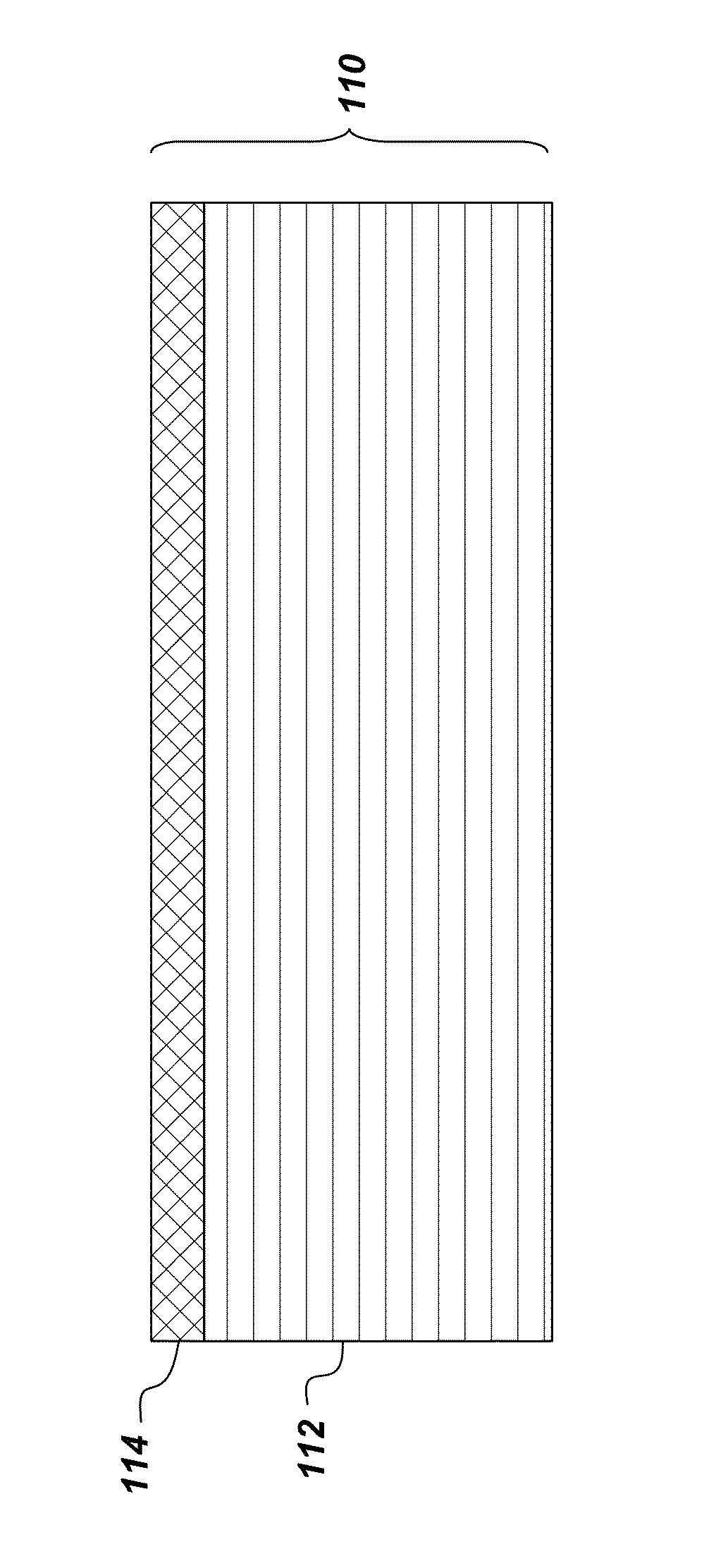Method for treating a semiconductor
a technology of semiconductors and layers, applied in the field of methods for treating semiconductor layers, can solve the problems of high back contact resistance, low power conversion efficiency of cdte-based photovoltaic devices, and high work function of cd
- Summary
- Abstract
- Description
- Claims
- Application Information
AI Technical Summary
Benefits of technology
Problems solved by technology
Method used
Image
Examples
example 1
[0046]A chemical agent paste was prepared by mixing 1 gram of fumed silica (0.2-0.3 micrometers diameter), 5 grams of propylene glycol, and 1 drop of a solution containing 1.0 molar elemental iodine in 1.0 molar potassium iodide. The paste was applied by brush coating onto cadmium telluride samples. The coated samples were heated on a hot plate for 2 minutes, and then the paste was removed with a water rinse. The paste did not lose its ability to wet the surface of the samples as the exposure occurred, in contrast to behavior observed for aqueous compositions. The paste remained orange colored, indicating that iodine was present throughout the exposure. A tellurium-enriched region was observed to form on the exposed area of the samples.
example 2
[0047]Thin film photovoltaic devices were fabricated using cadmium telluride (CdTe) as the absorber layer. The CdTe layer of the devices, after deposition, were treated with a paste chemical agent made by mixing 8 grams of fumed silica, 50 grams of propylene glycol, and 0.5 ml of iodine solution (1.0 moles / liter potassium iodide plus 0.5 moles / liter elemental iodine). Various devices were respectively subjected to one of several time-temperature combinations, with times ranging from 2 minutes to 20 minutes and temperatures ranging from 65 degrees Celsius to 150 degrees Celsius. A control group was treated using an immersion process in an aqueous iodine solution. After treatment with the iodine-containing chemical agent, fabrication of the devices was completed and then the resultant devices were tested in highly accelerated life tests (HALT). Several of the experimentally processed devices exhibited comparable performance to that of the control devices. Devices made with shorter exp...
PUM
| Property | Measurement | Unit |
|---|---|---|
| boiling point | aaaaa | aaaaa |
| boiling point | aaaaa | aaaaa |
| temperature | aaaaa | aaaaa |
Abstract
Description
Claims
Application Information
 Login to View More
Login to View More - R&D
- Intellectual Property
- Life Sciences
- Materials
- Tech Scout
- Unparalleled Data Quality
- Higher Quality Content
- 60% Fewer Hallucinations
Browse by: Latest US Patents, China's latest patents, Technical Efficacy Thesaurus, Application Domain, Technology Topic, Popular Technical Reports.
© 2025 PatSnap. All rights reserved.Legal|Privacy policy|Modern Slavery Act Transparency Statement|Sitemap|About US| Contact US: help@patsnap.com


